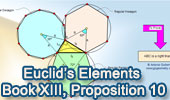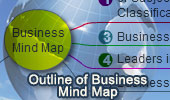Click the figure below to see the Mind Map.

Go to the interactive mind map


The pastor of a megachurch in Conyers, Ga., told his congregation last week that he’s gay, saying that while he knows his announcement might ruin his career, the recent rash of suicides pushed him to speak out. Jim Swilley, 52, founded Rockdale County’s Church in the Now 25 years ago. His wife, Debye, was the associate pastor, and together they had four children.
Swilley says he’s known that he’s gay since he was a boy, and his wife knew when they got married. Jim and Debye are now divorced, but they kept his secret for more than 21 years.
..............
“As a father, thinking about your 16-, 17-year-old killing themselves, I thought somebody needed to say something,” he told WSB TV in Atlanta. “I know all the hateful stuff that’s being written about me online, whatever. To think about saving a teenager, yeah, I'll risk my reputation for that.”

 |  |
| Learn how Microsoft Office 2010 offers flexible and powerful new ways to deliver your best work—at the office, at home, or at school. Create standout reports and presentations with tools that help you capture your ideas more creatively. Stay connected to your projects, even when you're away from your computer, with access to Office files via Web browser or Windows phone. Work efficiently with others by sharing, editing, and reviewing files at the same time—even across geographies and time zones. With Office 2010, you're in control, getting things done and producing amazing results however and wherever you work best. Geographic Eligibility: USA Offered Free by: Microsoft Corporation Other Resources from: Microsoft Corporation | |
"....with ANM rising and now over $7, is this growing market expectation of a counterbid."

The Ecuadoran journalist stated that he decided to resign from CNN that very Sept. 30 because the US TV channel’s viewpoint on the circumstances that day in his country differed from what he observed as he covered the events which pointed to the fact that a coup d’etat was taking place. Muñoz also noted that there is evidence that killing President Rafael Correa was a goal.The former CNN correspondent in Ecuador, Rodolfo Muñoz, explained on Tuesday that his resignation from the US news channel was due to the viewpoint that it had on the attempted coup d’etat in his country, which differed from what he observed as he covered the events.
"That same night on Sept. 30 I determined that it was no longer in my interest to continue doing that sort of work, a distinct slant from what was happening in my country; in the end I found that the option was gone, the conflicting viewpoints is what changed without a doubt and that’s where it ended,” the reporter said to the press in his country about his resignation from CNN, after covering the attempted coup d’etat in Ecuador.In a press release that Muñoz put out on Tuesday announcing his decision,the journalist affirmed that the role of a reporter is that of mediator and not that of agent or protagonist in the events.
"Throughout my career, I learned and taught that the reporter’s role in any news event, be it simple or complex, is only that of mediator, not that of agent or protagonist. I learned that we mediators cannot await newsworthy outcomes according to our own particular desires, preferences, phobias and prejudices.He added that the information that communicators transmit, in particular that to audiences in other countries, must allow for the possibility of two different views of the events."I always knew that all information, especially if it is directed to a foreign audience, one that does not know the particularities of a country other than their own, should be shown at the very least from two distinct perspectives ", he expressed in the statement.
They Wanted to Kill Correa
During an interview given to teleSUR on Tuesday, the Ecuadoran journalist reiterated that there is proof that they intended to kill President Correa during the putsch on Sept. 30.''A ton of ‘broadsheets’ showed up on the internet (...) above all a version which circulated worried me (...) some in the media were stating that nothing had happened (...) there is proof that they wanted to kill the president'', he asserted.
A group of police seized by force last Sept. 30 the First Regiment in Quito in protest, supposedly, against the refusal to veto the Public Service Act which proposes eliminating bonuses and promotions that are paid out in yearly salaries.
Ecuador’s president, Rafael Correa, was in the insurgency’s focal point to attempt dialogue, but was obliged to withdraw on account of the violent actions which were taking place in the area.
In the face of this, Correa denounced the fact that the violent police protests occurring in Quito formed part of an attempt at a coup d’etat which had been in preparation for months on the part of the opposition and had called on the police force that serves the country to revolt.
During the coup attempt, the Ecuadoran president remained for 12 hours held involuntarily in the police hospital where later he was rescued in a joint operation of the military and units from the Special Operations Group of the police.
After the attempt, some recordings from the central police radio dispatch revealed that rebelling agents were inciting the killing of the leader and were affirming that they would not allow him to leave the hospital, where he had sought safety after being attacked, as long as he refused to repeal the law.
After the events, the Ecuadoran leader in various occasions has declared that they tried to assassinate him during the putsch to overthrow him."We were able to make it to the emergency in an armoured car. When we set out in the car and we began to leave, a shower of bullets hit the President’s car, seeking to kill the President", Correa stated to teleSUR about the moment in which he was rescued from the health center.
"Every year Mining For A Heart of Gold invites Canada's most influential mining and junior resource stakeholders to play a leadership role in celebrating and supporting an outstanding charity. Some of the biggest names and companies in the mining and resource industry have helped Mining For a Heart of Gold raise more than $40,000.00 per event and improve the lives of millions of Canadians.
"This year's gala event at the Strathcona Hotel in Toronto celebrates the Jean Tweed Centre, a leading community-based substance abuse and problem gambling agency for women in Ontario. The evening kicks off at 4 p.m. and features critically-acclaimed bands such as Candice Chantrell and Canteen Knockout.
On the night of the event, Thursday, November 4th, corporate and private donors receive high-profile recognition, media coverage and inclusion in all collateral materials. Donors also receive year-round brand promotion on the Mining For A Heart of Gold website.
"The mining and resource industry has always had a heart of gold. On November 4th, join us and hundreds of your industry's top stakeholders as we drill down and offer a hand up to the courageous, heart-of-gold women staying at the Jean Tweed Centre"
| When: | Thursday, November 4th, 2010 Doors open at 4:00 p.m. (until last call!) |
| Where: | Strathcona Hotel, Main lobby and Ante Rooms 65 York Street, Toronto |
| Major intersection: | Wellington and York |
| After Party: | Strathcona Pub (hotel's lower level) 65 York Street, Toronto |
| Major intersection: | Wellington and York |
Peru: Key takeaways from a meeting with presidential candidate Ollanta Humala
Ollanta Humala tried to clear some of the anti-market perceptions that investors had about his political project dating back to the 2006 elections.? Today we met with Ollanta Humala, one of Peru's leading candidates for the April 2011 presidential race, during his visit to New York to speak to the investor community at an event organized by the Peruvian-American Association. His key message was that Peru's high growth needs to be better balanced with social development, which is still lagging despite the country's improved macroeconomic indicators, adding that securing "social peace" would enhance growth prospects and reduce operational costs for the private sector. He also tried to clarify his stance on the treatment of foreign investment, his willingness to respect private property, and his proximity with other Latin American presidents, all of which had raised concern among investors about his true policy intentions during the 2006 presidential campaign.
Overall, while details of specific policy proposals were generally lacking, many investors took his remarks as suggesting a low probability of a sharp policy U-turn or a shift to economic populism in Peru. Humala made general remarks about his intention to pursue conservative economic policies; to limit the fiscal deficit to no more than 2% of GDP; to maintain central bank independence and its inflation target of 2%; to keep a level of international reserves equivalent to at least 18 months of imports; further promote the development of the domestic capital market in PEN to reduce the dollarization index from 55% to 40%; facilitate the access of SMEs to capital markets using guarantees under discussion with the World Bank and IADB; and seek to increase FDI from US$7-9 billion to US$11-12 billion over the next five years. He also stressed the need to reduce Peru's huge infrastructure deficit estimated at US$35 billion, particularly in the highlands and jungle areas, which along with the improved provision of education and healthcare could help Peru increase manufacturing of goods with higher value added and reduce its reliance on commodity extraction and exports. When asked about the issue of FX appreciation, he said that he did not believe in capital controls because they had already been tried in Peru in the 1980s and they had led to too many distortions. Instead, he would advocate measures to reduce production costs of exporters.
Some of the lingering questions among investors were related to how the proposed increase in government spending would be financed and the tax treatment of mining companies. Humala stressed the need to increase the share of government spending in the economy, which currently stands below 16% of GDP, in order to improve the presence of the state across the whole country, improve the quantity and quality of public services, and develop the infrastructure--in public-private partnerships whenever possible. However, beyond efforts to reduce tax evasion, it was not clear how his government would manage to increase spending without increasing the fiscal deficit. When asked whether he would increase taxes on mining companies, he said that he would honor existing contracts but would seek to discuss new terms for new investments. He also stressed that he would not pursue nationalizations, but would seek to induce companies operating in primary sectors--particularly oil and gas--to link extraction with more value added activities like petrochemicals, so that Peru could export energy instead of just the raw materials. What follows are Humala's key remarks.
Introductory comments:
Humala reminded investors that he won the first round of the 2006 presidential election and that eventually he lost the second round to current President Garcia by only two percentage points.
Despite the published early opinion polls showing him in fourth place (behind Lima's mayor Castañeda, Congresswoman Keiko Fujimori, and ex-president Toledo), he is confident about his prospects for the April 2011 election. He noted that he only formed his political movement (Nationalist Party of Peru) in 2005, so his success in 2006 came despite not having an established party with wide political and economic backing. This time around, he feels his political party is more consolidated and should be more of an asset. Humala made the analogy of Peru as a store where sales were increasing but the infrastructure was insufficient to achieve higher economies of scale. At the nationwide level, he sees a US$35billion infrastructure gap. His proposal is to address this gap with public-private partnerships.
On Peru's structural vulnerabilities:
Humala and his team cited Peru's still poor statistics on extreme poverty, lack of basic services, and poor record on education, despite the very high growth over the past decade.
He mentioned that the would promote a goal of 6%-of-GDP spending in education, and noted that the problem is not the resources budgeted for this purpose as much as poor execution in spending. Separately, he commented that Peru remains overly depended on commodity extraction and commodity prices and as such, too exposed to Chinese demand for commodities (as the marginal price driver). This relates back to the infrastructure demands and the need to promote more sustainable and domestically oriented development.
On the role of the state:
The goal is to reduce Peru's dependence on commodity extraction and international commodity prices, and to increase the value added of domestic production. He wants to foster an educational revolution, especially for the most needy. The state needs to extend its reach across the country not just the coast. The other candidates have discussed reducing the size of the state and increasing its efficiency. His proposal, on the other hand, is for the state to be the primary driver of development, with the market playing an important but not a dominant role.
The state needs to be the actor promoting equilibrium between the economy, society and politics--these things should not be left to the whims of the market. Peru's private investors pay the price for social conflict, which comes when the state does not adequately play its role as mediator. They intend to reduce social conflict by promoting direct dialogue with social groups.
On preserving macroeconomic stability, they advocated:
- Maintaining BCRP's independence
- No capital controls
- Limiting the fiscal deficit to 1-2% of GDP
- Deepening local capital markets in PEN
- Commitment to low inflation Honoring and servicing the public debt
Regarding energy sector, tourism, FDI and free trade:
Overall, they identify needs/opportunities for US$80-100 billion of FDI in the coming years; they expect US$25 billion of FDI in the mining sector alone in the next 5 years. They concede they would study windfall taxes in the commodity sectors, looking at the experiences of Chile and Australia.
In general, they think the laws regarding commodity extraction are "too liberal" and they would review them in order to give increased prioritization to national benefits over export revenues. In the north, they see development of heavy crude oil production that could in 3-4 years double output to around 300kbd, which would make Peru self-sufficient.
Regarding natural gas, Peru can more than double output to 20 TCF over eight years, but the priority would not be to export it all, but rather to produce electricity and petrochemical products. They hope to export cement to Bolivia and Chile.
Tourism has great growth potential; they hope to increase employment in this sector from 800K to 1.5 million people by developing both the traditional Inca-related tourism of the south as well as further developing beach areas in the north. US$4-5 billion is needed to develop tourism.
Promoting investment in all of these areas is consistent with their overall program, since growth will increase tax collection and allow more and better investment in social development. Regarding how they will finance public investment and infrastructure, they see PEN84 billion of possible increased revenues from curbing tax evasion, which they will try to go after (though they concede some of this is very hard to actually collect). Humala initially opposed FTA with the US because they didn't know the intention of the agreement. They think that FTA is a misnomer, since trade is not free but conditional. They think the FTA agreement only benefits the formal sector; they would like to better protect those working in the informal sector that cannot compete by fostering their formalization, and also to defend local producers against improper trade actions like dumping.
Regarding the Chavez / Correa comparisons:
They would have anationalistic Peruvian government, not modeled on any other country's experiences. "We will look at Peru in the context of its own possibilities and problems." There is no ready-made remedy for Peru based on another country's policy mix.
Specifically, he doesn't support indefinite re-election or capital controls, and he supports an independent central bank--drawing a contrast with Venezuela. He firmly stated Peru would honor contracts and external debt, and rejected the notion he was ever an advocate of reneging on debt. He mentioned that external debt is no longer a problem for Peru, and cited the country's US$40 billion in international reserves.




1) Comparing LatAm countries and saying this-one-is-less-corrupt-than-that-one is like comparing various bodily cancers and saying that breast cancer isn't so very bad cos its mortality rate is 60%, peanuts against lung cancer.2) I lost any respect for TI as an overseeing body a couple of years ago when they repeatedly slammed Venezuela's PDVSA for not publishing its annual earnings and financials when in fact the company did (late, but they did). Once that was pointed out to TI, the body then insisted that this-or-that line item that's needed for full transparency was not included in the PDVSA financial reports, when in fact it was. The numbers in question were kinda buried, but they were there. It just showed TI for what it is; a biased, agenda-ridden organization that chooses its facts to fit the pre-conceived results and can't be bothered to do the kind of investigation that's needed for reliable stats work..
Vena Resources (VEM.to): The CEO’s take on recent developmentsSince the news (12) of the recent resource number from its Macusani uranium project, Vena Resources (VEM.to) has seen a revaluation and re-rating by the market. This is a good thing of course, so your author decided to run a mail past Vena’s CEO Juan Vegarra and ask if he’d like to write a section for The IKN Weekly on happenings at the company. This he’s kindly done and what follows are his words with no further comment from your author. Enjoy.Thanks Otto for allowing us to expand on the Macusani press release. We are very excited to release our first numbers and most importantly we strongly believe there is significant upside to our continuous investment with Cameco.
Our October 14th press release highlights several key points but I want to reiterate what I believe is the core of the release besides the actual resource numbers:
Vena and Cameco’s drilling program has delineated a structural corridor paralleling the small, central gully striking northeast – southwest that is dominantly a higher grade, uniformly disseminated mineralization. The zone is open to the southwest and there is a marked increase in grade in this direction which will be a major focus of the next drilling campaign.
The intensely disseminated style of uranium mineralization discovered in the Lower zone at Tantamaco greatly enhances the prospectivity of the Quenamari volcanics to host economic uranium deposits. Tantamaco will serve as a model in our search for the large deposits that may be completely hidden or have only minimal exposure at surface.
When you ask me where we are going with this, I asked David Bent, our Vice President of Exploration, to give me his early thinking (and I emphasize “early”) on the intent of the next drill program which should begin in December - depending on government approvals for drilling permits. David indicated that the drill plan is primarily targeted at increasing the resources at Tantamaco by following the trend of higher grade, disseminated mineralization to the southwest of hole TA-079. He also highlighted that there are 10 widely spaced holes at Isivilla to follow up on the intersections in IS-06 and IS-04 which could result in a new NI 43-101 resource.
In addition, there were 48 holes totalling 6,200 meters drilled at Nuevo Corani/ Amaritza during the 2006/08 period with mixed results. The mineralization was dominantly fractured - filling within the upper A horizon which is eroded off on both sides of the northeast – southwest trending ridge. Although the size (and grade) potential appears to be limited, we are confident that a reportable resource could be drilled off fairly quickly.
And finally, from a more wildcat point of view, the Muñani sandstone-hosted mineralization could be very significant. Outcrop is very sparse in the area underlain by the sandstone. Although grades are overall quite low (400 ppm range), a couple of the small mineralized outcrops are very impressive with fine grained autunite disseminated throughout the rock. If we were to get a drill hit in the sandstones it could really develop into something large.
Obviously this is all early thinking but it gives you a sense of how excited we are of what we are seeing on the ground and what the potential may be not just in Tantamaco but in several of the other targets in Macusani and Muñani – which you have not heard us mention in a while.
It is clearly understood that we will need to look at the entire Macusani Plateau to justify a large milling operation, but if we are successful delineating somewhere north of 20 million pounds in reserves over the next few years, we are confident Peru will have its first Uranium mill constructed. Is 20 million pounds in reserves possible? That is Vena’s Uranium team main challenge without having to resort to any kind of M&A in the near term.
Readers should understand there are a number of challenges still ahead for the Company but the end goal is achievable, we have the technical team in place and great supporting partners allowing Vena to focus on four key areas for the next two years:
• Azulcocha Region – increase and upgrade resources and construct scalable mill
• Macusani Uranium Region – increase and upgrade resources leading to feasibility study
• Esquilache Region – Expand geological understanding of entire caldera, complete an expanded drill program and publish NI 43-101 and support Gold Fields in Amantina.
• Pucara – Complete underground development to confirm and expand silver/lead/gold resources and permit/construct scalable mill
Going forward, you can expect Vena to continue to monetize its non-core assets via outright sales as well as more joint ventures and perhaps a couple of strategic corporate moves. We believe the expansive portfolio we accumulated during the first five years has enabled us to define which projects were the better targets to advance across several metals and districts in Peru - now we can focus on bringing a couple of our projects into cash flow which will enable us to fund additional exploration initiatives without diluting our shareholders much further.
Once again – thanks to you, to all IKN readers and to all Vena shareholders for supporting us while we survived the toughest recession we have faced in our lives. Although there is tons of work ahead of us, we believe we are poised for a strong come back.

"Lesbian tropi-punk-Kumbia from Argentina with Nancy Sinatra’s “These Boots Were Made For Walking” done as a punk version of Mexican ranchero, with a cameo appearance by Willie Nelson and we’re into the stratosphere of awesomeness."
| % of "Middle Class" per country | |
| Peru | 57% |
| Colombia | 61% |
| Brazil | 64% |
| Mexico | 68% |
| Argentina | 71% |
| Uruguay | 72% |
| Chile | 77% |
| source: Banco Santander | |